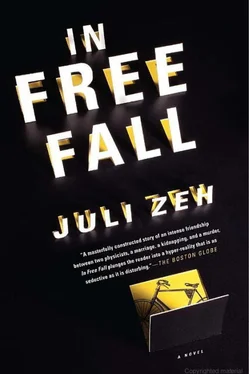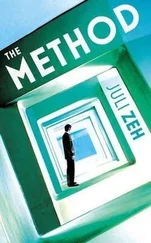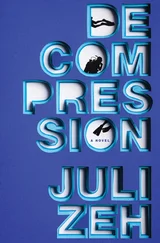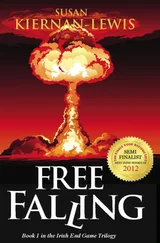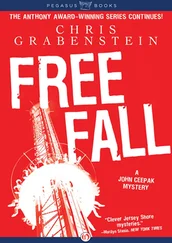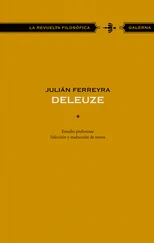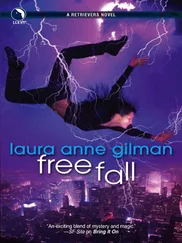“Please do light up! That way you’re one of two people who are allowed to smoke in this apartment. Here’s the ashtray—you can believe in its material nature or not, but it will fulfill its function in any case.
“It’s very much the same with time. Time fulfills its function, and we don’t know much more about it than that. It’s generally accepted that time is a strictly regulated process with a necessary order of cause and consequence. The only things that humanity shares willingly are its mistakes!
“Take this building, for example. They started work on it in 1896. The hammering of carpenters echoed through the streets in 1897, and soon after that the building was finished. What do you think was the reason for its construction? A lack of living quarters in the Wilhelminian period? Or an aesthetic love of the neo-Gothic and neo-Baroque styles? Let me tell you this, Detective Schilf. The reason for its construction was its completion.
“You smile. But it goes some way toward proving my theory. What are the chances of an architect’s plan actually beaming a house? Have a guess. Eighty percent? Good. The probability of a finished building being preceded by an architectural plan is nearly a hundred percent. The construction enables the existence of the building, but the building determines its own construction. Therefore the likelihood of a building being the cause of its own construction is significantly higher than the opposite assumption.
“You’re still smiling. I ask you this: What is time when we can prove that an effect logically precedes its own cause? Now you’re laughing. I think that you have understood me from the very beginning. I see it in your blank look.
“Don’t say anything. Forget this little play of thoughts. It was only to shake the gates of your imagination. Please don’t use the saucer, Schilf. I’ve brought you an ashtray specially. Or can’t you see it?
“Let’s get to the Many-Worlds Interpretation. You must know that God is guilty of its creation—or rather: its nonexistence. Stupidly, human life all comes down to a miracle, by which I mean an impressive instance of coincidence. During the big bang, the universe could have developed in an infinite number of ways. The number of possibilities that allowed for biological life was infinitely small. Despite this, the path that led to our existence was chosen. All the constants of nature that we observe are exactly calibrated to enable an unimportant cluster of biomass called the human being to exist among them. Given the tiniest deviation from the laws of physics we would not exist.
“Savor that thought, Detective: You are improbable. I am improbable. We are a coincidence, with a probability of one in ten to the power of fifty-nine. A ten with fifty-nine zeros after it, Schilf! You would have to throw the dice that many times for your existence to happen at least once.
“Do you feel ill at the thought of numbers like that? Dizzy? I wouldn’t hold it against you. How stupid it was to get rid of a god who had been specially conceived of as the clockmaker of this precision machine called the universe! Abandoned, the physicist elevates his own existence into a matter of doubt and investigates against himself. What if the big bang had brought not just one, but ten to the power of fifty-nine worlds into existence? At least one of them with the right conditions for human beings to live in? Detective Schilf, that would turn the question of God into a problem of statistics.
“You’ve read that somewhere already? And I wrote it. So we nearly have something in common.
“Ever since quantum mechanics led to the discovery that—before the instant in which they are observed—the smallest particles exist not just as single bodies but as multiple layers, the Many-Worlds idea has become not only a philosophical convenience, but a consistent interpretation. Apart from that, it also leaves human beings their free will. For as long as we can call forth new worlds through our actions, it doesn’t matter how much we are affected by the cause-and-effect mechanisms within each world. So we remain free in our decisions.
“Those are the advantages of the Many Worlds. Their disadvantages turn even the most peaceful physicists into bad-tempered know-it-alls. They mutter that this is nothing other than a tortured attempt to circumvent the notion of an intelligent designer. Exactly, I say! The know-it-alls complain that the theory goes beyond verifiable assumptions. And again I say, exactly! They are right—the critics of the Many-Worlds Interpretation just as much as its advocates—and they are wrong in the same way. All of them. Because they are all—listen carefully—all materialists.
“I see amazement in your eyes. I’m trying to bamboozle you: I don’t give a damn about the Many-Worlds Interpretation.
“You remain impassive. You’re tough, Detective. In an interrogation—yes, I know, you’re just asking a few questions—everything has to come out, doesn’t it? I’ll tell you what I’m really working on. I’ll bet that you didn’t cotton on to any of the intellectual crimes committed daily at my desk while you were searching it. Yogi tea—a nice touch!
“Please record my confession herewith. I am a scientist, but not a materialist. What I am, I still do not know. In any case, I see not only space and time but also matter itself as the product of a collaboration between mind and reason. My world does not consist of fixed objects but of complex processes. All states of being and continuous forms are simultaneous and therefore timeless. What we see of them are merely clips, scenes from a spool of film running through the time projector inside our heads. They show us reality as a dance of concrete objects.
“Try this experiment, Schilf. Pack a camera and go to the top of a tall building one night. Choose an exposure of a few seconds and take a photograph of a crossroads. What do you see? The lights of cars and streetcars as straight or wavy lines. A network of lines. The longer the exposure, the denser the network.
“Take this cup. Imagine that you can photograph it from high above, with an exposure of a million years. It will not show as a cup, but as an impenetrable mesh. There will be a frayed, lighter patch in the middle where clay is formed in the earth. Around it will be the traces of the human beings who mine the clay and work it into porcelain. The forming of the cup. The transport of it. The use of it. Its disintegration. The material it is made of going back into circulation. You also see—we’re very high up and we have the ultimate bird’s-eye view of things—you also see the stories of how all the people involved in producing and using the cup come into existence and fall away. And the stories of their forebears as well as all those who are descended from them, and so on. You would see—no, don’t look away, look at the cup! You would see that this cup transcends time and space and is quite simply connected with everything, because everything is quite simply part of the same process. And if you were able to increase the exposure to an infinite degree, and the distance from which you view it to an infinite distance, you would see reality as it really is. Everything flowing into everything else, outside of both space and time. A tightly woven carpet by the bed of a god who does not exist. Amen.
“Are you still there? Can you hear me? I didn’t want to alarm you. Do you have a headache? Should I get some pills?
“Of course it’s fine. It always is. That is one of the things I’ve learned in the last few days.
“Allow me a final comment. A couple of words on coincidence, the mention of which makes your eyes light up. If you, Schilf, as I suspect, are also not a materialist, you will be able to make something of the following connection.
Читать дальше
